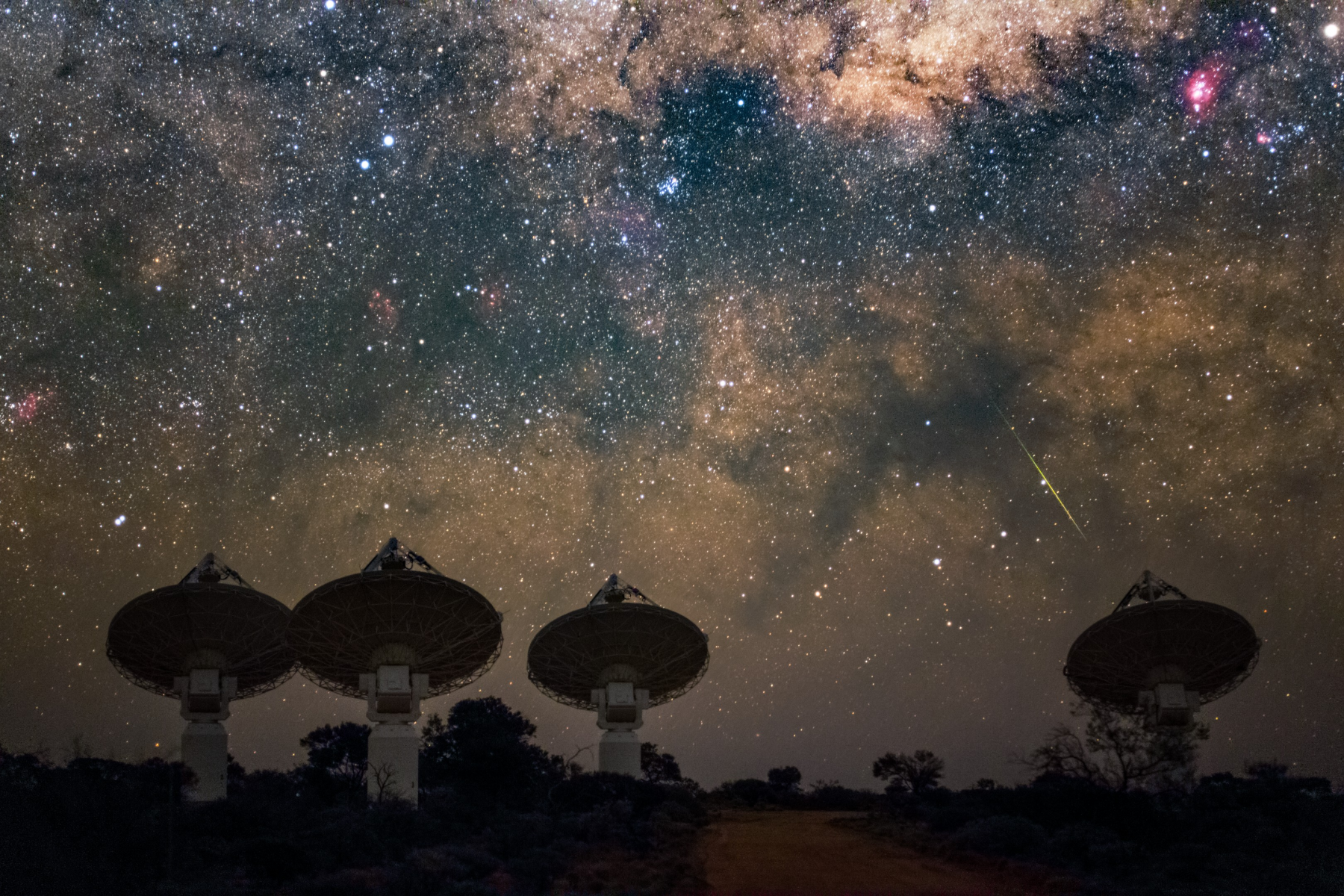Astronomers create AI to better communicate their stellar research
An international team of scientists, led by a researcher at The University of ���۴�ý, have developed a novel AI (artificial intelligence) approach to distil technical astronomy terminology into simple understandable English in their recent .
The is a result of the international collaboration and is transitioning radio astronomy language from specific terms, such as FRI (Fanaroff-Riley Type 1), to plain English terms such as “hourglass” or “traces host galaxy”.
In astronomy, technical terminology is used to describe specific ideas in efficient ways that are easily understandable amongst professional astronomers. However, this same terminology can also become a barrier to including non-experts in the conversation. The RGZ EMU collaboration is building a project on the citizen science platform, which asks the public for help in describing and categorising galaxies imaged through a radio telescope.
Modern astronomy projects collect so much data that it is often impossible for scientists to look at it all by themselves, and a computer analysis can still miss interesting things easily spotted by the human eye.
Micah Bowles, Lead author and RGZ EMU data scientist, said: “Using AI to make scientific language more accessible is helping us share science with everyone. With the plain English terms we derived, the public can engage with modern astronomy research like never before and experience all the amazing science being done around the world.”
Using AI to make scientific language more accessible is helping us share science with everyone. With the plain English terms we derived, the public can engage with modern astronomy research like never before and experience all the amazing science being done around the world.
Radio telescopes work in a very similar way to satellite dishes, but instead of picking up television signals they can be used to pick up the radio light generated by very energetic astrophysical objects - such as black holes in other galaxies. For many decades, these "radio galaxies” have been categorised into different types by astronomers to help them understand the origins and evolution of the Universe.
Recently, dramatic improvements to radio telescopes around the world have revealed more and more of these radio galaxies, not only making it impossible for professional astronomers to look at each one individually and categorise it, but also introducing new variations that aren’t already captured by existing radio galaxy types. Instead of trying to invent more and more new technical terminology for different types of radio galaxy – and train people to recognise them - the RGZ EMU team saw a different path forward that would enable citizen scientists to participate more fully in their research project.
The RGZ EMU team first asked experts to describe a selection of radio galaxies with their technical terms, and then asked non-experts to describe them in plain English. Using a first of its kind AI based approach developed by the team, they then identified the plain English descriptions which carried the most scientific information. These descriptions, or “tags”, can now be used by anyone to describe radio galaxies — in a way which is meaningful for any English speaker — without any specialist training at all. This work will not only be crucial for the RGZ EMU project, but with ever increasing volumes of data across many areas of science this new AI approach could find use in many more situations where simplified language can accelerate research, collaboration and communication.
Led from ���۴�ý, this research was conducted by researchers from the UK, China, Germany, the USA, the Netherlands, Australia, Mexico, and Pakistan. The data, code and results are all available .
